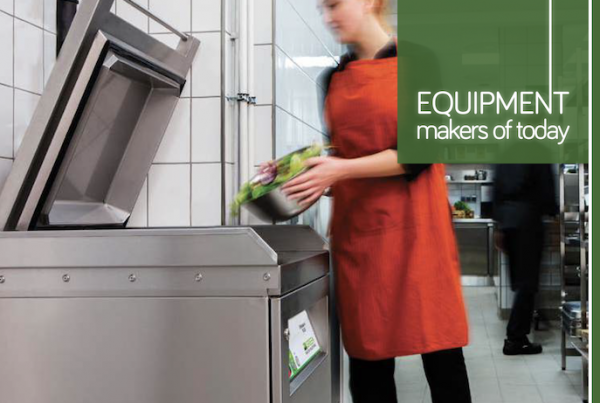
Why shouldn’t they be? Ice is put in drinks, to keep seafood fresh, dry ice for ice-cream and even for show in ice sculptures. All this said, there are still many food business owners who do not place concern on where they obtain the ice from, how it is stored and ultimately if they are using ice correctly. Humans saw ice as only a side effect of winter and they’d slowly just melt away. Nobody saw any use for it until 1805. Frederic Tudor and his brother were at a picnic having ice cream and cold beverages (presumably chilled in a refrigerator) and joked how people in the scorching West Indies would be envying them for this luxury. Frederic Tudor is widely known as the “Ice King” for this epiphany only for the fact he shipped tonnes of ice halfway around the globe. However, you would not expect ice in this state to be the most pristine as its water sources can be dubious and the conditions it endured during its travels less than hygienic.
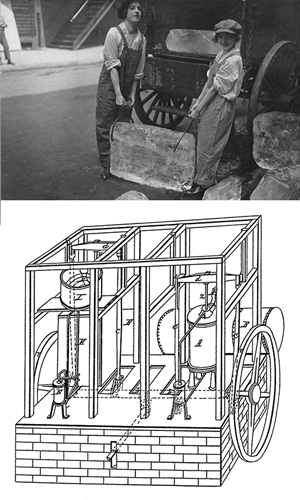 As Tudor sparked the concept of ice cubes in drinks, it was John Gorrie who built the first ice machine in 1850. His invention was spurred by wanting to provide cooling solutions for patients suffering from tropical diseases such as malaria and yellow fever but ice was still being shipped then and would not arrive in time to the patients. Taking ideas from earlier refrigeration experiments, Dr. Gorrie designed, patented, and built a prototype of his ice making machine. Production of ice relies upon a process called “vapor compression refrigeration”. Gorrie himself described it as such:
As Tudor sparked the concept of ice cubes in drinks, it was John Gorrie who built the first ice machine in 1850. His invention was spurred by wanting to provide cooling solutions for patients suffering from tropical diseases such as malaria and yellow fever but ice was still being shipped then and would not arrive in time to the patients. Taking ideas from earlier refrigeration experiments, Dr. Gorrie designed, patented, and built a prototype of his ice making machine. Production of ice relies upon a process called “vapor compression refrigeration”. Gorrie himself described it as such:
“If the air were highly compressed, it would heat up by the energy of compression. If this compressed air were run through metal pipes cooled with water, and if this air cooled to the water temperature was expanded down to atmospheric pressure again, very low temperatures could be obtained, even low enough to freeze water in pans in a refrigerator box”.
After that, more and more people star ted to discover the benefits of ice and ice drinks became necessary for food business establishments. As ice continue to evolve, professionals also discovered different sizes of ices and composition makes a difference in the beverage sector. For example, cube ice for regular drinks and golf-ball sized ice for whiskey.
Before you head out for an ice machine, you should know which machine will best suit your needs.
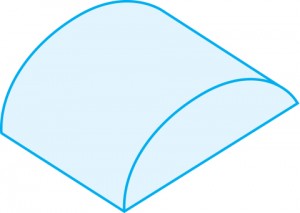 CRESCENT
CRESCENT
Its curved sides finds favour with restaurateurs because of its good liquid displacement which leads to better profits. Also, the attractive shape allows liquid to easily flow over it when pouring liquid from bottles or via a dispenser thus reducing waste and splashing occurrences.
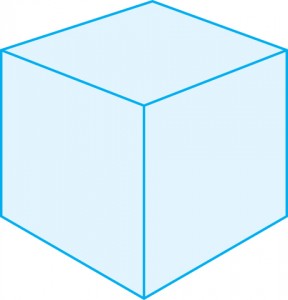 CUBE
CUBE
The most popular type of ice for its flexibility, they are mostly used for sodas or spirits. With a high ice-to-water ratio, cooling is maximum and melts slower so that customers can enjoy a full flavoured beverage longer. It also reduces the need for an establishment to constantly produce ice. Cube ice is also great for large-volume applications, including bagging and bulk cooling.
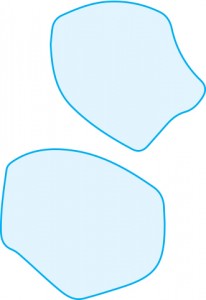 CUBELET
CUBELETManufacturers label this ice category with many names but basically it is an ice type that can be chewed. A smaller version of the cube ice, it differs in texture by being softer and easier to chew. Used in certain beverages, it is also suitable for institutional foodservice facilities in self-service dispensers.
 CUSTOM
CUSTOMSome manufacturers are able to build a machine for the shape of ice you want such as Hoshizaki’s ice ball machine. In other places, you might find Gourmet ice that is also called Top Hat or Octagon which are usually used in fine-dining restaurants or upscale bars.
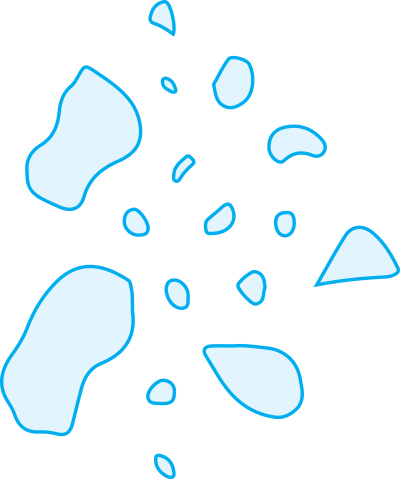 FLAKE
FLAKEDue to its fast cooling proper ties, flakes are always used in keeping fresh produce at proper temperatures. It can also be used in ice blended beverages because it is easier to break down in the blender.
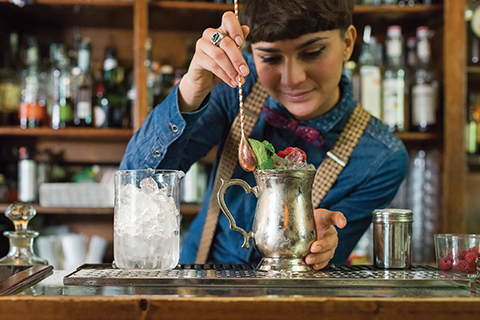
FOOD SAFETY QUALITY ICE
Ice looking cloudy, milky, or emitting an unpleasant odour? You might want to discard it as it is considered to be unsafe for consumption. While these cold cubes are not food in itself, the U.S. Food and Drug Administration considers ice to be food because it is used directly with items that consumers will be eating. U.S. FDA mandates ice manufacturers to produce, hold, and transport ice in clean and sanitary conditions, monitor the cleanliness and hygiene of employees, use properly cleaned and maintained equipment, and use water that is safe and sanitary. While manufacturers meet requirements in building machines, the day-to-day ice production in an establishment is dependent on the user and to share further pointers on hygiene in ice, we have ice machine experts from Brema, Hoshizaki and Manitowoc Ice.
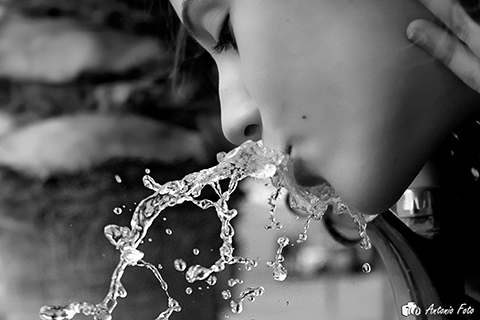
WATER FOR ICE
Brema:The only thing that makes ice is water. Therefore the water needs to be drinkable and in certain cases, treated with specific filtration system. It is a standard step
if you install coffee machine or dishwasher and must be the same for the icemakers, other wise the ice quality could be lower and the machine will dir ty faster, risking the hygiene and the the taste of ice; and ultimately the beverage.
Hoshizaki: it depends on the water quality that you have or what is known as “hardness of water”. It describes the quality of water which contains numerous dissolved compounds of calcium, magnesium or other metallic elements. These compounds causes scaling in pipes which can eventually cause problems in pipes and the evaporator.The best kind of water is actually running water as the pure part of water becomes ice and impurities will drain down but no matter what; a water filter is necessary.
Manitowoc Ice: Ice clarity is ultimately determined by the Total Dissolved Solids (TDS) of the water. The higher the TDS of incoming water, the cloudier the ice. Commercial cuber ice machines by design remove much of the TDS in the ice by freezing pure water and dumping mineral deposits that create cloudy ice. For example, Manitowoc – Indigo machines have an Ice Clarity feature that allow more water to flow over the evaporator during the freeze cycle further removing TDS from the water.
IF ICE IS CONSIDERED FOOD, WHY DO MANY OF US NEGLECT THE SANITATION OF ICE?
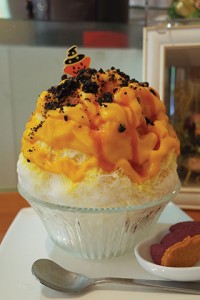 Brema: ICE is FOOD. We need to consider the ice maker like a refrigerator and not like an oven. If you ask a Chef to clean his oven everyday, it is normal but to ask the same of a Barman for his icemaker, it is possible he will think it is unnecessary. Yet the icemaker produces food exactly like an oven.
Brema: ICE is FOOD. We need to consider the ice maker like a refrigerator and not like an oven. If you ask a Chef to clean his oven everyday, it is normal but to ask the same of a Barman for his icemaker, it is possible he will think it is unnecessary. Yet the icemaker produces food exactly like an oven.
Hoshizaki: There is still a lack of education in some countries. As so far, nobody has died of ice poisoning, business owners may push aside the importance of ice hygiene to the sidelines. Economics is also a factor as they do not feel the need to invest in an ice machine although you can typically see a return-of-investment within 3 years with consistent use. However, more and more food chains are beginning to understand the importance of ice safety hence the use of ice machines are being regulated in their business.
Manitowoc Ice: Ice is “food” as people do consume this product. Following strict cleaning and sanitation guidelines recommended by commercial ice machine manufactures is strongly encouraged. Manitowoc offers innovative sanitation technology like LuminIce and AuCS that enhance ice machine systems sanitation.
IS THERE A PROPER PROCEDURE TO HANDLE ICE? AS PER FOOD SAFETY REGULATION STANDARDS / HACCP STANDARDS?
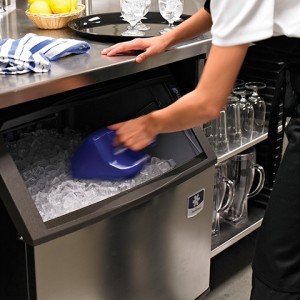 >Brema: Don’t touch the ice with hands and use the proper scoop, keep the scoop safe and clean, and definitely don’t store Champagne and Beers inside the ice because before talking about HACCP standards we must teach the people what ice is for.
>Brema: Don’t touch the ice with hands and use the proper scoop, keep the scoop safe and clean, and definitely don’t store Champagne and Beers inside the ice because before talking about HACCP standards we must teach the people what ice is for.
Hoshizaki: The most logical way is definitely to use ice scoops and not make contact with ice by hands. The cleanest way is to have a machine with built-in ice dispenser which is available in some of our units.
Manitowoc Ice: It is recommended to always use an approved ice scoop and to always store the scoop per manufacturer’s instructions. When transporting ice, always use and approved (and clearly marked) ice transportation bucket. These are typically a transparent blue color. Actual contact with the ice should be avoided.
WHAT SAFETY MEASURES / TECHNOLOGICAL ADVANCEMENTS ARE THERE IN YOUR ICE MACHINES TO ENSURE THAT THE ICE PRODUCED IS SAFE FOR CONSUMPTION?
Brema: Our ice machines are certified by TUV , UL and NFS. For us, certifications are a guarantee that a company takes manufacturing seriously. Secondly, we will check the material and construction of a machine to see if there are any corners or difficult-to-clean spaces that would require many tools for the operations. BREMA focuses on these points to ensure the hygiene of ice and the ease of operating an ice machine.
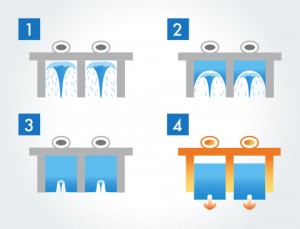
Hoshizaki: Compartmentalisation is key to our design. Parts that are not involved in forming ice (compressor, condenser) will not be in contact with the ice making parts. Hoshizaki KM series uses the surgical stainless steel evaporator which enhances hygienic level. The ice drop area is also made smaller to minimise possible airborne bacteria contamination. Also, our IM ice machines form ice with continuous running water that shoots upwards to the ice mould to form the ice cube by layers of water and KM series keep running water on its stainless steel evaporator surface.
Manitowoc: We design machines that are very easy to clean and sanitise. Additionally, it features innovative and exclusive sanitation technology like LuminIce and AuCS that enhance ice machine systems sanitation. Manitowoc continues to research new sanitation technologies that may be incorporated in their future design that will make the machines even easier to own and operate.
HOW SHOULD USERS CARE FOR THEIR ICE MACHINES?
Brema: We provide the use and care manual with every single units, but the end user should not tr y to clean the machine, this should be done from approved ser vice company. But the end user can easily clean the ice storage bin and assure to keep this food zone safe.
Hoshizaki: With a one piece door design and pull out air filter, cleaning is made simple. On top of the regular cleaning of the ice bin, the Washing Cycle is a once-a-year routine that is done by our service team.
Manitowoc Ice: It is highly recommended that users strictly follow the manufacturers guidance on cleaning, descaling, and sanitation frequency as well as regular maintenance recommendations.
Much as manufacturers can pass on product care knowledge to users, it is always the daily routine that determines the quality of ice. Therefore, it would also help if users are familiar with indications of a machine not properly cared for so that they can take appropriate measures to arrest it. An excerpt from the Foodservice Equipment Report magazine on signs of machine neglect:
• Ice at the bottom of the bin is solid and star ts forming an ice cave
• Ice is cloudy, pitted or holey, half-formed, very wet or has an unpleasant odour
• Ice production slows down. Neglected machines can slow down production by up to 50%
• Scale, slime or mould is found either in the bin, reservoir, evaporator plate, cube-size controls, water sensors and thermistors, water-distribution par ts and water hoses or the water sump.
WHAT TYPES OF ICE MACHINE DOES THE COMPANY MANUFACTURE?
Brema: Customers can select from 6 Ice types that include 12 different kinds of shape:
Ice Cube – single cube, compact and crystalline. Appreciated for its elegant look and suitable for all types of glasses.
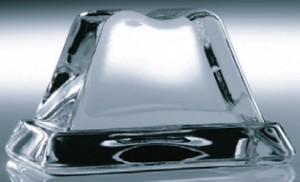 Fast Ice- single vertical cube, very light with a truncated pyramid shape perfect for fast food chains and disco clubs.
Fast Ice- single vertical cube, very light with a truncated pyramid shape perfect for fast food chains and disco clubs.
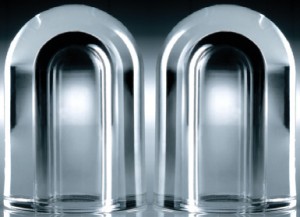 Ice Finger- a bullet cube that cools very fast, particularly suitable in case of hard water.
Ice Finger- a bullet cube that cools very fast, particularly suitable in case of hard water.
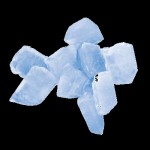 Ice Pebbles- the multiuse “micro-cube” ideal for cocktails as well as seafood and buffet.
Ice Pebbles- the multiuse “micro-cube” ideal for cocktails as well as seafood and buffet.
Ice Flakes- flexible and decorative ice for retail, wellness, fish and laboratory sector.
Ice Scales- sub-cooled flakes for long term conservation, specific for fish, chemicals, construction, dair y and meat processing industry.
Hoshizaki: We offer ice types that meets almost all the industry needs and customised ice is also available. Typical ice types are:
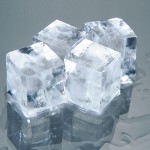 Cube Ice- perfect symmetry enhances the looks of a drink while the ice’s clarity leaves a good impression. The selfcontained unit makes it easy to use and practical with a built-in bin; especially to fit compact spaces.
Cube Ice- perfect symmetry enhances the looks of a drink while the ice’s clarity leaves a good impression. The selfcontained unit makes it easy to use and practical with a built-in bin; especially to fit compact spaces.
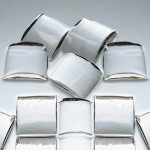 Crescent Ice- this ice does not stick together as there are no air pockets thus it will come across as a distinctive piece in the drink. Also comes in a selfcontained unit.
Crescent Ice- this ice does not stick together as there are no air pockets thus it will come across as a distinctive piece in the drink. Also comes in a selfcontained unit.
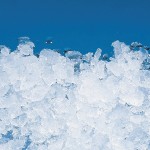 Flake Ice- made up of 70% ice and 30% water, flake ice is used typically for cooling purposes as it does not cause the “freeze -burn” effect. It is suitable for use in catering, supermarkets, healthcare and even cocktail bars. Theunit that produces flake ice can also make nugget ice.
Flake Ice- made up of 70% ice and 30% water, flake ice is used typically for cooling purposes as it does not cause the “freeze -burn” effect. It is suitable for use in catering, supermarkets, healthcare and even cocktail bars. Theunit that produces flake ice can also make nugget ice.

Manitowoc: The company is a global leader in the design and manufacture of automatic commercial ice machine. We offer a full range of ice machine for daily capacities from 80 kg – 6,000 kg per day as well as a range of ice types for foodser vice, beverage, retail display, and healthcare applications.
The emphasis is always on food safety and sometimes we tend to forget that it is more than cleanliness of produce, safety over view during the cooking process, food storage and service. If quality of water matters in preparation of beverages then it should be natural that we consider the same for ICE. You want to ensure that these cooling agents used in your F&B establishment, whether supplied or produced by an ice machine; is safe for consumption and makes an impression as well.







